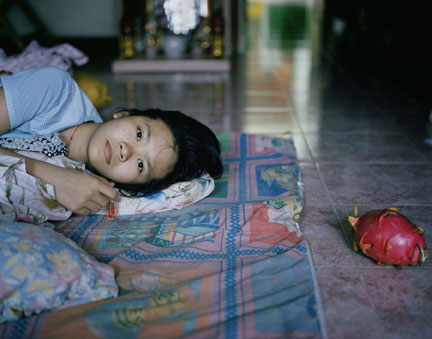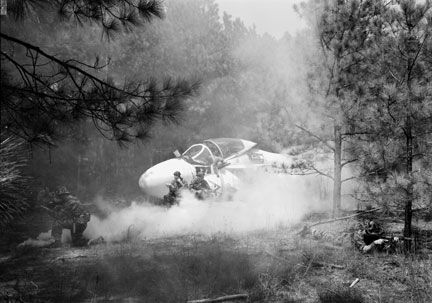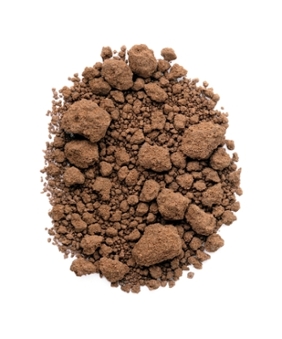Stages of Memory: The War in Vietnam

About the Exhibition
Stages of Memory: The war in Vietnam
Work by:
Howard Henry Chen
Binh Danh
An-My Lê
Dinh Q. Lê
Johnny Miller
Liza Nguyen
Thirty years after the Fall of Saigon, the word “Vietnam” in the minds of most Americans arguably conjures images of a war more readily than those of a country. This is not surprising. The war in Vietnam was one of the longest and most devastating in American history, a blow to our national psyche, and a living nightmare for countless soldiers and families who lost loved ones. It was also extensively photographed and was the first truly televised war, all of which played a key role in the discourse of opposition toward the end. In this country evidence of the war is limited to documents that are for the most part neatly tucked away in archives and libraries, a sober monument in Washington, DC, and in our individual and collective memory.
In contrast to the relative invisibility of the war in this country, in Vietnam physical evidence of the war is everywhere
In contrast to the relative invisibility of the war in this country, in Vietnam physical evidence of the war is everywhere—in memorials and monuments, war cemeteries, bomb craters, flattened ancient ruins, discarded scrap metal, land mines, and hidden traces of dioxin in the soil. But as witnessed in Germany and Korea, the remnants of war, both psychological and physical, inevitably fade as decades pass. Today approximately 58% of the population of Vietnam is under the age of thirty, meaning that most Vietnamese have no direct experience of what they refer to as The American War. One of the fastest growing economies in the world, this youthful nation has embraced Western-style capitalism and is enjoying many of the luxuries of increasing prosperity. And since the normalization of relations with the United States in 1995, Vietnam has eagerly welcomed American tourists, many of whom are more interested in its beaches, food, and culture than in visiting places significant to the war.
This exhibition brings together the work of six artists, all of whom have a profound relationship to Vietnam and the war that raged on its soil for more than fifteen years. Ranging in age from 26 to 45 years old, the majority of these artists did not experience the war first hand. Rather, they know it though vague childhood memories of a homeland they left behind, or through the experiences of their parents. They also know it, like non-combatant Americans, through magazines, history books, movies, travel and museum exhibitions. Although in many ways their work hinges on biographical information, it also addresses more universal concerns. Above all else it explores the malleability of memory, and by extension raises questions about the reliability of seemingly objective historical accounts, such as news reports and photographs, that greatly influence how war is communicated and remembered.
Above all else [this exhibition] explores the malleability of memory, and by extension raises questions about the reliability of seemingly objective historical accounts, such as news reports and photographs, that greatly influence how war is communicated and remembered.
Layered and fragile memory is at the core of Dinh Q. Lê’s work. Born in Vietnam in 1968, Lê moved to Los Angeles with his family in 1979 after fighting erupted between the Vietnamese and the Khmer Rouge near their village at the Cambodian border. Inspired by both the turbulent history of his county and his experience of dislocation as a child, Lê began physically weaving photographs together in his college art classes. Typically combining one war era media image with an image from popular culture such as a Hollywood movie, Lê creates complicated visual puzzles in which two images vie for dominance within a colorful matrix of warp and weft. Through this process Lê denies each picture a sense of autonomous signification, and as our brain vacillates back and forth between the two images, the work becomes a poignant metaphor for the imprecision of memory. Lê tells a personal story that well illustrates this point. During recent wild fires near his mother’s home in Southern California, the helicopters dousing the flames with retardant in smoke-darkened skies reminded him of those he had seen in Vietnam just before his family fled. He quickly remembered, however, that there had been no helicopters in their region of Vietnam. What Lê thought he remembered from life was, in fact, a scene in the film Apocalypse Now.
Although Lê chooses to live and work in Ho Chi Minh City (formerly Saigon), he prefers to exhibit his work abroad rather than subject it to the possibility of government censorship. One exception was an installation and performance piece called Damaged Gene Project (1998) in which he confronted the issue of dioxin, a byproduct of defoliants such as Agent Orange that remains in the soil of Vietnam and has been shown to cause birth defects. Between 1962 and 1971 the United States government sprayed more than 12 million gallons of defoliant on Vietnam, and in some regions dioxin traces are still found in fish and animal tissue and in the blood of people born after the war.1 For his installation Lê created a series of baby doll sized clothing for dioxin victims, items such as shirts designed for co-joined twins embroidered with the logos of the American chemical companies that produced the defoliants. He then rented a stall in the main city market, sold the items and distributed information about birth defects. He was taken into custody briefly by the authorities during the month-long sale, but they released him a few hours later after sympathetically sharing with him photographs of children with birth defects from their files.2
…what is most significant can’t be seen or photographed— the traces of the sweat, tears, and blood of soldiers, and the chemicals that have been absorbed forever into the landscape.
The virulent devastation caused by these invisible traces of war also concerns Liza Nguyen (French, b. 1979), who traveled to Vietnam, the home country of her father, for the first time in 2000. As a sort of ritual, she began methodically collecting soil samples from locations all over Vietnam, mostly places with names that are familiar from the war to Americans, like Cu Chi and Dien Bien Phu. She brought the soil back to Europe and photographed it in a clinical, controlled manner, enlarging her prints to reveal the subtle textures and colors of the earth. But what is most significant can’t be seen or photographed-the traces of the sweat, tears, and blood of soldiers, and the chemicals that have been absorbed forever into the landscape. Nguyen juxtaposes her large photographic prints of soil with sets of small postcard leaflets depicting the museums, monuments, propaganda billboards and publicly-displayed weapons that represent the official Vietnamese government version of the war. Her small, cheap postcard reproductions rob these places of their imposing scale and pretentiousness, revealing them to be kitschy, consumer-oriented constructions.
Like Nguyen, Binh Danh (Vietnamese-American, b. 1977) makes images that reference the hidden, yet indelible of traces of war that remain in the landscape. Danh appropriates photographs of the war from various sources such as old magazines and the internet, turns them into negatives, and then sandwiches the negatives between leaves from tropical plants and sheets of glass. These devices are then placed outside, usually on the roof of his house, for a period of two to three weeks, during which time the process of photosynthesis slowly transforms the light-sensitive pigments in the leaves into pictures. The leaves are then dried and fixed in resin. The process results in haunting images that celebrate the heartiness and mystery of nature, in spite of the destruction imposed upon it by mankind.
An-My Lê’s Small Wars series takes a more specific approach to the question of how we remember, glorify, and imagine war after the fact. Lê, who was born in Saigon in 1960 and came to the United States as a refugee in 1975, created this series to explore, as she describes it, “the Vietnam of the mind.” Joining Vietnam War re-enactors on weekends in the woods of South Carolina, Lê explores the absurdity of both war and its simulation, but without mockery. Sensitive to the fact that what motivates the re-enactors is often a complex web of psychological need, fantasy, and a passion for history, Lê probes the ways in which our ideas about the War in Vietnam have been molded, and obscured, by the media. In the process she reminds us that violent battle is something that most of us can only imagine.
As the son of an American soldier who served in Vietnam, Johnny Miller (American, b. 1971) has always tried to imagine what his father’s war experience was like, a chapter of his life that, like many veterans, he rarely spoke about. It was Miller’s discovery of his parents love letters from that time, when they were newly engaged and his mother was still a teenager living with her parents in Lawrence, Kansas, that shed some light on this period. By methodically photographing the letters he underscores their significance as evidence to him that his now divorced parents were once madly in love. Interestingly, these touching documents, covered in “x”s, “o”s and “I love you”s, and full of the banal news of daily life from both sides, skirt the atrocities of war. Instead they display ardent attempts to bridge distance and somehow find reassurance, and speak volumes about the anxiety of coping with separation.
…these places are in many ways symbols for the heady glee of the new Vietnam— one in which Technicolor playgrounds increasingly obscure the pallor of military green.
Finally, the photographs of Howard Henry Chen (American, b. Vietnam, 1972) play the critical role in this exhibition of showing us a contemporary view of Vietnam, one that can perhaps help counter the war stereotypes promoted by Hollywood and other sources of exaggerated fiction. Chen, who was born in Vietnam and moved with his parents to the United States at the age of three, centers his pictures around his relationship with his Vietnamese cousins, from whom he was separated for nearly thirty years. Constantly fascinated by what his life would have been like if his parents had never left southeast Asia, Chen makes pictures that pivot between documenting his cousins’ lives as part of the bourgeoning middle class, and his own experience as a tourist in a country to which he is deeply linked. As his cousins drag him to the tacky amusement parks and flashy restaurants where they like to spend their extra money and time, Chen photographs with a touch of irony but also a great deal of respect, recognizing that these places are in many ways symbols for the heady glee of the new Vietnam—one in which Technicolor playgrounds increasingly obscure the pallor of military green.
-Karen Irvine, Curator
1 Seth Mydans, “Vietnam Sees War’s Legacy in Its Young,” The New York Times, May 16, 1999.
2 Dinh Q. Lê, conversation with the author, January 9, 2005.
MoCP is proud to participate in Commit to Memory, a citywide collaboration that explores the complex history, memory and legacy of the Vietnam War through visual imagery, theater and film. Find out more at www.committomemory.org.
The Stages of Memory: The War in Vietnam exhibitions, presentations, and related programs are sponsored in part by U.S.Bank, the Illinois Arts Council, a state agency; The Kaplan Family Foundation; The Joy Foundation; City of Chicago Department of Cultural Affairs/After School Matters; American Airlines, the official airlines of the Museum of Contemporary Photography, and our members.



Image Gallery


